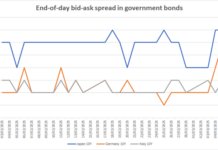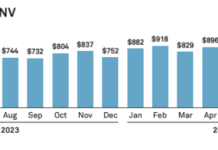
As the fixed income market becomes more electronic, we are seeing an increasing number of firms connecting to data centres around the world. The DESK spoke with Judd Gaddie, co-founder of TransFICC, about the reasons for this and how trading firms will need more sophisticated infrastructure to manage future data volumes while ensuring resilience and compliance.
Why do fixed income trading firms use data centres?
Historically many trading firms were able to utilise their offices to host servers for trading. They would purchase leased line connectivity to connect to markets for trading and market data. These firms began to notice that they were at a disadvantage to those who were located physically closer to the market.
Firms soon realised that they needed to host their equipment in the same data centres as the market, or nearby in order to compete. This is especially true for Central Limit Order Books like MTS where speed gives traders an advantage over the rest of the market to hit the best price or cancel existing orders quickly.
While firms are utilising public cloud such as AWS, Google Cloud or Azure, these are not suitable for some of the low latency trading venues. Since public cloud providers have their own data centres, servers are typically further away. However, public cloud providers are not standing still and are in some cases providing solutions which allow computers to move closer to the trading venue.
How are computers connected within a data centre?
Most network connectivity today is transmitted over fibre optical cable. This is true across vast distances under the oceans, as well as within a data centre. Light travels through fibre optic cables at around two-thirds the speed of light. While this is very fast it still puts people at a significant disadvantage in fast markets where more than 500 trades can take place in the time it takes for light to travel a couple of miles.
There is ongoing research into developing optical cables where the data transmission latency has improved from two-thirds to the speed of light; however, it can never go faster than the speed of light itself.
Do trading firms use data centres for other reasons apart from latency?
Everyone assumes that reducing latency is driving adoption, but this is only part of the story.
There is a natural network effect when you are connected and live in data centres where your customers and markets are located. It is quicker and more cost effective to simply run cables between computers within a data centre rather than provisioning leased line connectivity over longer distances between parties. As an example, at TransFICC, a new client can go live on a venue in about a week, because we’ve already got the data centres and the circuit connectivity in place. Everything can be done quickly as it is all software deployed and configured.
Compliance is also an important driver. Most of our clients are regulated and need to demonstrate that they have robust solutions. We provide high availability, with multiple switches and servers with no single point of failure, for each client in each data centre location. Clients also require a second disaster recovery solution, and this typically means a second data centre location which has a minimum distance from the primary location to protect against broad reaching failures like floods, earthquakes or the risk of a country wide grid failure like the northeast blackout of 2003 that took out most of northeastern United States and part of Canada.
Why did you build your own data centres?
Originally, we wanted to build software, but to do that you need to house it in certain data centres.
The first specialist vendor we used was in London, but when we had to build our first client connections, we also needed a US point of presence (PoP) which meant dealing with another vendor. We realised that if we didn’t do this ourselves, it would be operationally harder to change as we grew.
We wanted to vertically integrate our business so that we could control everything end-to-end ourselves and using an external vendor meant that things were less in our control. We also wanted to deploy all software and configuration changes remotely and having full environment control was an important part of the decision.
Customers don’t care if a failure of your service is the fault of a third party, they want a service that is reliable. This is particularly true now with DORA, where customers are required to audit their vendors and also their vendor’s suppliers.
We went live with our own data centres in 2021, renting rack space in Equinix in London, Milan, and New York, connecting our own servers and providing our clients with a PoP.
By bringing the hosting in-house we are able to be more efficient and the auto-deployment enables us to re-configure as customer requirements change.
Why don’t trading firms operate their own PoPs?
Most of the dealers use external vendors because those firms are specialists and can do it faster and cheaper than they can do it themselves.
Data centres like Equinix provide the raw rack and power. And then everything that goes in that rack, all the servers, switches and firewalls, need to be built and configured.
What data centres have you deployed so far?
We are now live in London, New York, Chicago, Frankfurt, Tokyo and Hong Kong, with global circuits providing system redundancy. In addition we have circuits connecting to local AWS regions from our data centres, which gives customers running in AWS lower latency access to trading venues.
This network allows our clients to trade on all of our supported venues globally.
How do you see this market evolving in the next year?
As the Fixed Income market continues to evolve, combined with advances in technology like AI, the importance of data centres will increase. Firms will need more sophisticated infrastructure to manage increasing data volumes and ensure resilience and compliance.
For us, over the rest of this year we are adding data centres in Bergamo (IT3), Singapore (SG1) and Aurora (DC3).

 transficc.com
transficc.com
©Markets Media Europe 2025






















